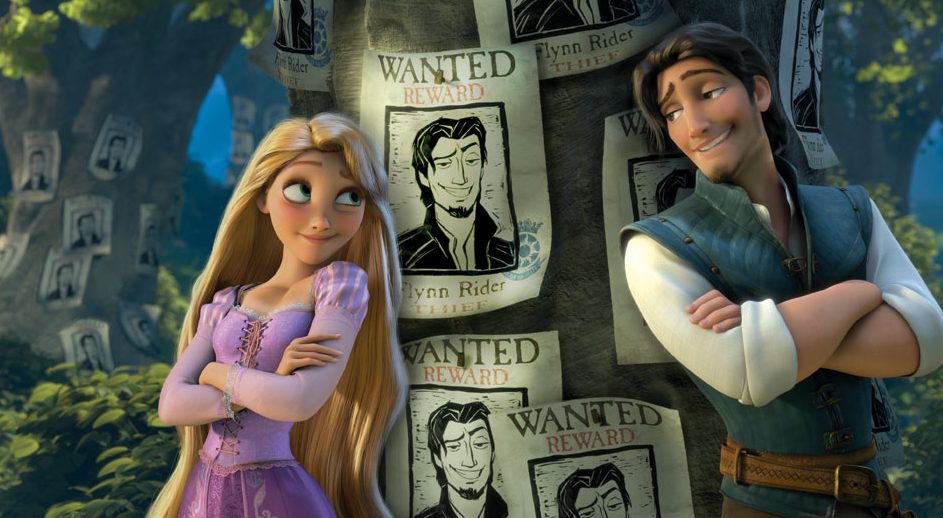Review Tangled 2010 – Rapunzel
Introduction
I’ll start with a bit of frustration about recent animated films. Many movies, like Scooby! 2020, are based on simple fairy tales or lighthearted stories—like those from the Brothers Grimm—that have no business tackling heavy social issues. Yet, they’re packed with themes reflecting America’s current cultural debates, and it’s honestly exhausting. Scooby!, a kids’ mystery series, was never about politics, but the 2020 version shoehorns in major social agendas. It’s enough to make me want to lose my lunch.
This trend continues in films like Maleficent: Mistress of Evil and Onward, which are loaded with overt racial diversity messaging. Don’t get me wrong—I’m not against inclusivity, but when every movie crams in LGBT representation, multiculturalism, and feminist themes so blatantly, it feels forced. How can you fully enjoy a film when it’s more about preaching than storytelling? This push for representation might aim to reduce prejudice, but it’s backfiring, annoying audiences—including some in the very communities these films claim to champion. People just want to watch a good movie, not a soapbox.
Enough of that. Let’s focus on the main event: my review of Tangled.
Plot Summary
Tangled is Disney’s take on the Brothers Grimm’s Rapunzel, reimagined as their first fully 3D-animated fairy tale, moving away from traditional hand-drawn techniques. The script adds fresh elements, like a witty chameleon, a spirited horse, and cleverly integrated musical numbers.
What won fans over wasn’t some feminist agenda or a “strong princess” trope, but the film’s vibrant 3D visuals, enchanting soundtrack, and heartfelt story. Rapunzel’s journey to defy her manipulative “mother” Gothel and chase her dreams resonates deeply. Even the rough-and-tumble thugs in the Snuggly Duckling tavern have their own aspirations, adding charm to the narrative.
This focus on dreams is Disney’s core message here, making Tangled a standout. It stirs emotions, sparks inspiration, and weaves a touching romance between Rapunzel and Flynn Rider. Unlike classic fairy tales, there’s no prince—just a roguish thief—and Rapunzel isn’t a damsel in distress. She faces Gothel’s schemes with grit, setting Tangled apart from Disney’s earlier princess tales.
Visuals
Tangled pioneered Disney’s “pure” 3D animation, relying entirely on computer-generated imagery without motion-capture techniques. This was a leap forward in 2010, though other 3D films existed. The technology, later refined in Frozen 2, shines in details like Rapunzel’s flowing hair—a feat for the time. The visuals are bright, colorful, and inviting, appealing to kids and adults without feeling garish. There’s little to criticize here; the animation is a triumph.
Music
I’m no music expert, so I’ll keep this brief. Tangled’s soundtrack leans gentle and melodic, but it’s not quite my taste, so I’d rate it a 7/10. The background score and songs blend well with the story, though they might not click for everyone.
Themes and Meaning
Tangled delivers a powerful message about pursuing dreams, especially for women, laying early groundwork for feminist themes without overdoing it. Gothel represents stifling, old-fashioned family dynamics, warning Rapunzel that the outside world is full of danger. In truth, the family itself mirrors society’s constraints, and breaking free requires courage and resolve to chase personal ambitions.
Released before Disney’s wave of “socially conscious” films, Tangled stays true to its fairy-tale roots, avoiding heavy-handed contemporary issues. That’s why I love it—it’s funny, charming, and meaningful without preaching. It earned a stellar 7.7/10 on IMDb, with similar praise elsewhere. Even the tavern thugs have dreams they later achieve, posing a question to viewers: Are you brave enough to pursue yours? Gothel’s toxic manipulation is the real obstacle, not the world’s dangers, which are manageable if you reject fearmongering about society’s deceit.
Drawbacks
As a musical fairy tale, Tangled might not click for those who prefer straightforward stories like Pinocchio (2019) over music-heavy films. Songs are woven throughout, balanced to avoid overwhelming the plot, but Disney’s musical tradition can feel alienating if you’re not a fan. Non-music lovers might find this approach grating.
Love is central to Disney’s fairy tales, and Tangled prioritizes a kid-friendly romance. Recent Disney films like Frozen and Maleficent have shifted toward adult audiences, incorporating political undertones that stray from the studio’s classic warmth. Thankfully, Tangled avoids this “politicization,” leaving little to fault.
Conclusion
If you’ve got kids, Tangled is a perfect family watch. Its untainted fairy-tale spirit delivers a universal message about dreaming big, showing that even society’s outcasts harbor ambitions. Free of political baggage, it’s a refreshing escape. For more great picks, I recommend A Shaun the Sheep Movie: Farmageddon (2019) for its hilarious antics and Mary and The Witch’s Flower (2017) for its stellar storytelling. Both are fantastic, though Farmageddon isn’t a fairy tale—it’s just pure fun.


